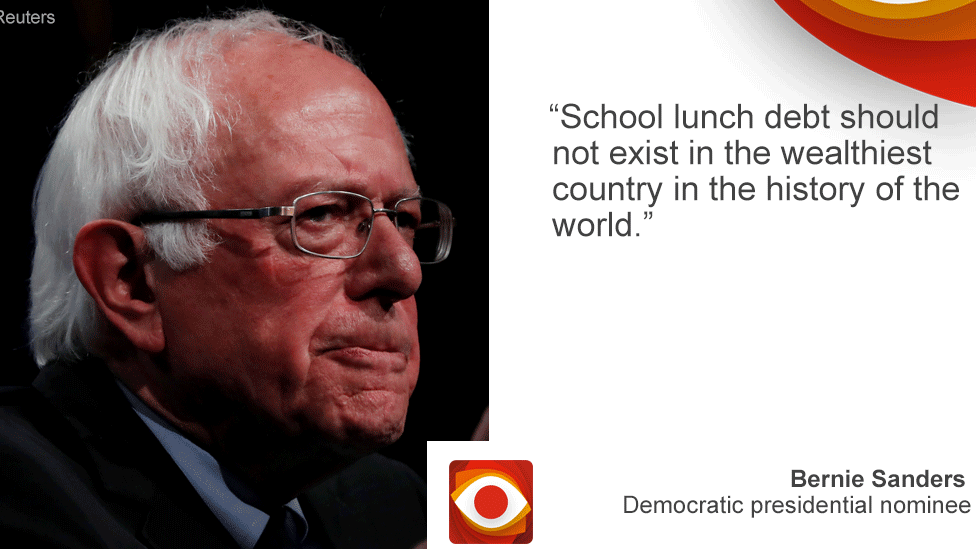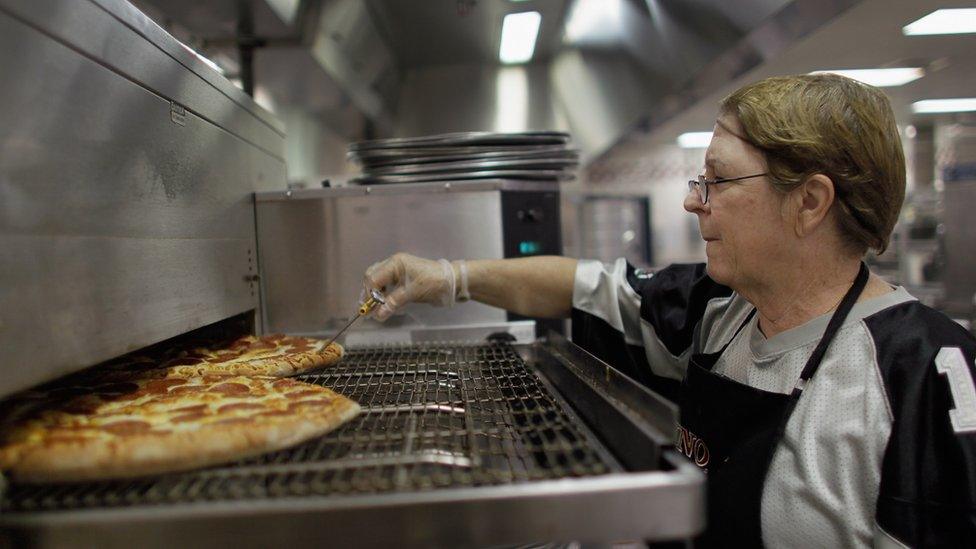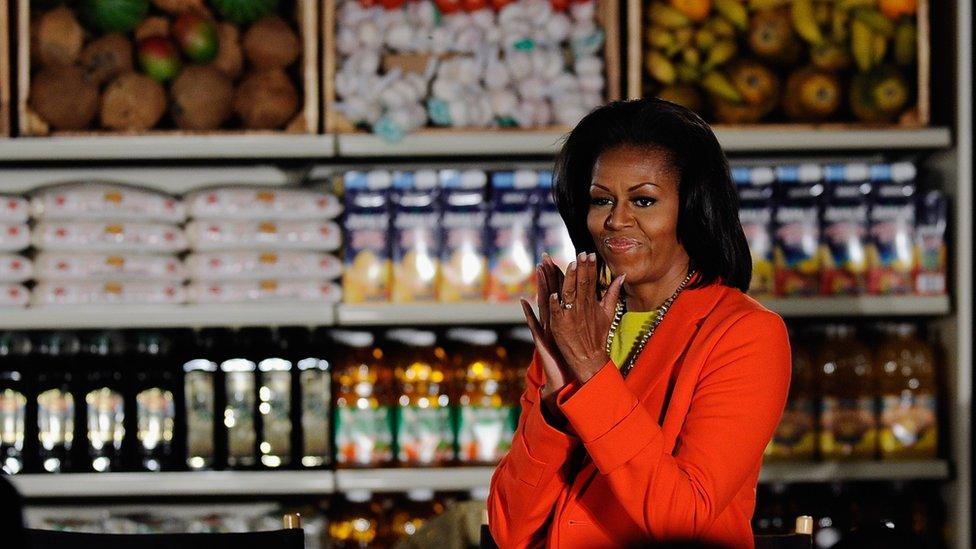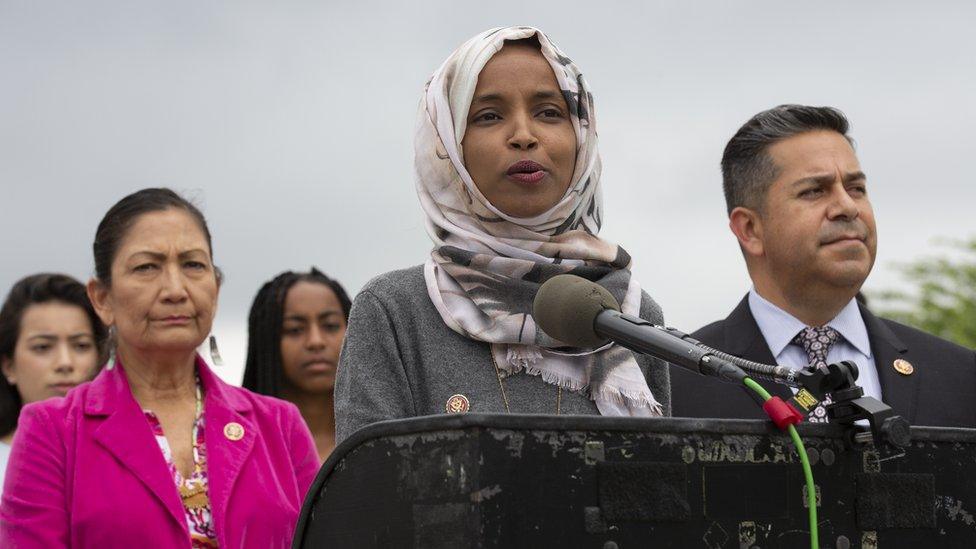School lunch debt: How widespread is it in the US?
- Published

United States Senator Bernie Sanders is calling for an end to "school lunch debt".
Mr Sanders, one of the Democratic Party candidates for the presidency, has been discussing the issue on social media.
Fellow Democratic Party politicians have recently proposed legislation to curb it.
When payment for a school meal is required but a student is unable to pay, this is a lunch debt or unpaid meal charge.
So how widespread is it in America?

Millions of American children are served free school meals
Who qualifies?
About a quarter of children - 7.7 million in total - who are served lunches at public schools, pay full price. The rest qualify for free or reduced meals in schools - a government-funded programme which currently benefits millions of children across the country - based on family income.
If students can't make their lunch payments - on a regular basis - there have been cases of schools refusing to serve them meals, or offering snacks instead.
A school district in Rhode Island reversed a policy which would have limited pupils who owed lunch money to a meal of a jam and peanut butter sandwich, external, according to the Guardian.
Steps have been taken to end "lunch shaming" - these are "practices that embarrass children who are unable to pay for a meal" according to the US Department of Agriculture (USDA).
Official guidance on the issue discourages "the use of hand stamps, stickers, or other visual markers to identify children with lunch debt."
Schools are encouraged to discuss debts privately and directly with adults, rather than through the child.
Responding to the issue of school lunch debt in 2017, USDA introduced a rule which required schools to have written policies on unpaid meals.
"We are committed to continuing to work with schools to minimize the impact of unpaid meal charge issues on children, and on their bottom line," said a USDA spokesperson.

Michelle Obama championed a programme aimed at making school lunches healthier
States including New York, Texas, California and New Mexico have introduced legislation which involves serving meals to children whether they have outstanding debts or not. Lunch at every public school in New York City has been free since 2017.
But this has seen unpaid meal debts escalate, said Diane Pratt-Heavner of the advocacy group the School Nutrition Association (SNA).
In 2017, for example, Denver schools announced they would serve meals to students who couldn't pay. But this led to debt rising from $13,000 to $365,000, according to website Chalkbeat.

Democratic Congresswoman Ilhan Omar has announced a bill to tackle lunch debt "shaming"
How widespread?
There's an incomplete picture of school lunch debt across the country.
One reason we might be hearing about this now is because lots of states and school districts are still reeling from budget cuts imposed after the 2008 recession, said Michael Hansen, Senior Fellow and Director at the US-based Brown Center on Education Policy.
But it's not obvious if school lunch debt is growing, or is just an issue which has gathered more public opinion recently, he added.
A government study in 2012 found that 58% of school districts incurred unpaid meal costs during the previous school year.
A more recent survey by the SNA of 1,550 school districts, found that three-quarters of public school districts held unpaid meal debt at the end of 2017.
The median debt at the school district level, amassed by all the schools in that area, was $2,500. The figures aren't broken down by individual school, so we don't know how much debt is owed per school or per student.
Some districts reported substantially higher amounts, and others far less.
A student can carry over the debt from one year to the next, but after the sum is deemed uncollectable - for example if the student graduates or leaves the area - it must then be paid off by the district.
Government funds cannot be used once the debt becomes "bad" so schools are forced to use their school budgets or seek donations, said Ms Pratt-Heavner.


